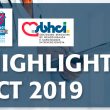At present, we are well aware of the rise in mortality caused by severe tricuspid regurgitation (TR). Medical and surgical treatments have turned out to be suboptimal. Hence, endovascular intervention presents as an alternative therapeutic strategy with promising results. The aim of this multicenter, prospective study was to assess the safety and efficacy of the<a href="https://solaci.org/en/2022/05/30/europcr-2022-clasp-tr-study-promising-results-of-endovascular-intervention-of-tricuspid-regurgitation/" title="Read more" >...</a>
Ten Commandments for 2021 Guidelines on Valvular Heart Disease
Since the latest version to the Valvular Heart Disease Guidelines from the European Society of Cardiology, plenty of evidence has been accumulating, finally leading to this updated version. In this regard, below you will find what has been called “10 commandments” that sum up this new document, to keep you in the loop. The incidence<a href="https://solaci.org/en/2021/11/29/ten-commandments-for-2021-guidelines-on-valvular-heart-disease/" title="Read more" >...</a>
AHA 2020 | EMPATROPISM: Empagliflozin in Non-Diabetics with Cardiac Failure
Empagliflozin improves cardiac function, exercise capacity and quality of life in non-diabetic patients with cardiac failure and deteriorated ejection fraction. These findings were presented during the scientific sessions at AHA 2020 and published simultaneously in JACC. EMPATROPISM outcomes are on the same line as other studies using sodium glucose 2 cotransporter inhibitors (SGLT2) which showed<a href="https://solaci.org/en/2020/11/23/aha-2020-empatropism-empagliflozin-in-non-diabetics-with-cardiac-failure/" title="Read more" >...</a>
PASCAL in Tricuspid Regurgitation with Encouraging Results
Courtesy of Dr. Carlos Fava. Tricuspid regurgitation (TR) is associated with higher mortality and morbidity, and it most frequently has a functional cause. Furthermore, it has been proven that tricuspid surgery has mortality rates between 8% and 20%. On the other hand, it has been verified that, in the case of left-sided disease affecting the<a href="https://solaci.org/en/2020/01/21/pascal-in-tricuspid-regurgitation-with-encouraging-results/" title="Read more" >...</a>
TCT 2019 | COAPT Cost Effectiveness: Better Quality of Life and Survival Rate, but Worth It?
Courtesy of SBHCI. The COAPT showed transcatheter repair of the mitral valve using the MitraClip resulted in reduced mortality and hospitalization for cardiac failure and improved quality of life, compared against optimal medical treatment in patients with cardiac failure and moderate to severe functional mitral regurgitation. The cost-effectiveness of this procedure has not been analyzed<a href="https://solaci.org/en/2019/10/01/tct-2019-coapt-cost-effectiveness-better-quality-of-life-and-survival-rate-but-worth-it/" title="Read more" >...</a>
Very Encouraging Results for TAVR in Low-Risk Patients
Courtesy of Dr. Carlos Fava. About 12% of patients >75 years old have aortic stenosis. In 3%-4% of them, such disease is severe. Transcatheter aortic valve replacement (TAVR) has already proven to be beneficial for extreme-, high-, and intermediate-risk patients. Regarding low-risk patients, we currently have different analyses; two of them are randomized and their results are<a href="https://solaci.org/en/2019/09/30/very-encouraging-results-for-tavr-in-low-risk-patients/" title="Read more" >...</a>
Dietary Supplements and Diets Show No Impact on Cardiovascular Risk
Americans spend billions in dietary supplements every year but, in truth, this money is only wasted, according to evidence form a recent study published in Intern Med. Most of dietary interventions and nutritional supplements including multi-vitamins, selenium and antioxidants, do not reduce cardiovascular risk or mortality, according to this large analysis and systematic revision of<a href="https://solaci.org/en/2019/07/23/dietary-supplements-and-diets-show-no-impact-on-cardiovascular-risk/" title="Read more" >...</a>
Un Underestimated Symptom of Aortic Stenosis
For the first time, this long term observational study on a large cohort of contemporary patients with aortic stenosis (AS), has shown syncope is an underestimated threat, associated with worse prognosis after surgical aortic valve replacement (SAVR). It is interesting to note that other symptoms or early signs of AS that will normally indicate SAVR<a href="https://solaci.org/en/2019/02/11/un-underestimated-symptom-of-aortic-stenosis/" title="Read more" >...</a>
TAVR in Low-Risk Patients with “Zero” Mortality and “Zero” Stroke
Transcatheter aortic valve replacement (TAVR) is now the standard of care for patients with symptomatic severe aortic stenosis who are at extreme, high, or intermediate risk for surgery. This multicenter, prospective study (Feasibility of Transcatheter Aortic Valve Replacement in Low-Risk Patients With Symptomatic, Severe Aortic Stenosis) included low-risk patients and was approved by the United<a href="https://solaci.org/en/2018/11/09/tavr-in-low-risk-patients-with-zero-mortality-and-zero-stroke/" title="Read more" >...</a>
What Should We Use for the Functional Assessment of Coronary Lesions in Severe Aortic Stenosis?
This systematic analysis measured intracoronary pressure in different phases of the cardiac cycle and flow velocity in patients with severe aortic stenosis and coronary artery disease, who were scheduled for transcatheter aortic valve replacement (TAVR). The aim was to determine the impact of aortic stenosis on: 1) flow, at different phases; 2) hyperemic coronary flow;<a href="https://solaci.org/en/2018/10/30/what-should-we-use-for-the-functional-assessment-of-coronary-lesions-in-severe-aortic-stenosis/" title="Read more" >...</a>







